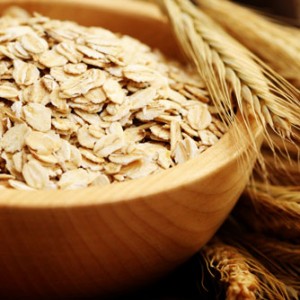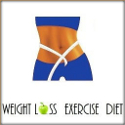-
Healthy Makeover: 7 Easy Ways to Improve Your Diet
Tuesday, July 1st, 2025by Brigid Titgemeier, M.S., Public Health Nutrition
What is a healthy diet? So many opinions, so little consensus.
 In a recent study published in January 2014, researchers tried to identify how confused people are when it comes to nutrition and healthy eating.
In a recent study published in January 2014, researchers tried to identify how confused people are when it comes to nutrition and healthy eating. Of the 631 adults surveyed, more than 71 percent of them reported hearing moderate or high levels of contradictory nutrition information.
The study also found a slight association with people’s confusion and a resistance to following healthy menu recommendations.
Results from this study suggest that the conflicting nutrition messages that are posted everywhere create more confusion and frustration amongst the public.
While the findings from this study are not shocking, they shine light on the need for credible and reliable dietary advice, in addition to less confusing nutritional claims on food products.
It doesn’t have to be so difficult. Use the following seven tips as a credible guide to choosing food more confidently.
#1: Don’t Confuse Dieting and Deprivation
Just as over-consumption can lead to weight loss failure, adopting a “rice cake and diet coke” type of diet will eventually slow down your metabolism, not to mention increase the risk of chronic disease.
Repeated cycles of gaining and losing weight are referred to as weight cycling, which is a common outcome of yo-yo dieting.
A 2010 review suggests that weight cycling may be associated with elevated levels of chronic inflammation and thus, an increased risk of chronic disease.
Whether you are trying to lose weight or maintain it, don’t deprive yourself of food. Aim for five small meals a day and determine your general calorie needs using this guide.
#2: Look Further than the Number of Calories
Eating for a healthy, vigorous life involves more than merely adding up daily calories or points.
Physiologically speaking, maintaining calorie balance overtime is essential for a healthy weight however; it does not guarantee that the body is fed with adequate nutrition.
Choose foods based on nutrient-density, meaning foods that provide valuable calories that are packed with plenty of vitamins, minerals, fiber, protein, and healthy fats with minimal saturated fat and added sugar.
Nutrient-rich foods like brown rice, popcorn, nuts, legumes, olive oil, salmon, and spinach promote health and may help prevent disease.
#3: Don’t Sub Veggie Chips for Veggie Sticks
Don’t fall for the veggie chips, wafers, crackers, and even veggie pasta, that are gaining a presence outside the produce section of the grocery store.
Many of these new products contain a vegetable powder blend or dried veggies towards the bottom of the ingredient list.
At the end of the day, veggie chips are still chips and their fat, saturated fat, and sodium content is fairly comparable to regular old tortilla chips.
The best advice is to stick to the regular-old-produce section for your veggies. Real vegetables contain a rich source of potassium, magnesium, fiber and other important nutrients that you wont find in the processed veggie chips.
Try incorporating vegetables into your diet in a variety of ways—add spinach to an omelet, pack fresh veggies with hummus for a snack, add a side salad to lunch and dinner, try roasted veggies like broccoli and cauliflower.
#4: Choose Whole Fruit instead of Juice
Fruit drinks of all kinds – orange juice, apple juice, grape juice, etc. – are one of the major sources of added sugar in the American diet.
The truth is that research suggests fruit drinks are much higher in added sugar compared to whole fruit, which causes a spike in blood sugar levels, shortly followed by crash in blood sugar levels.
 Aside from sky-high levels of sugar, fruit juice is stripped of fiber that is found in whole fruits.
Aside from sky-high levels of sugar, fruit juice is stripped of fiber that is found in whole fruits. Fiber is one of four shortfall nutrient that is inadequately consumed in the general American diet.
While sipping your apple juice might be more convenient, biting into the whole apple will be worth the extra effort.
#5: Buy Foods in their Basic Form
Take control out of the manufacturers hands by opting for products that have not been infused with added sugar.
A recent study found that a high intake of added sugar is associated with an increased risk for cardiovascular disease mortality.
Instead of buying flavored yogurt, go for plain and add your own flavor with fruit and nuts like berries, pomegranate seeds, raisins, walnuts, almonds, or anything that satisfies your taste buds.
#6: Choose Grains Wisely
Whole grains are a significant source of dietary fiber intake in the American diet.
 A research study published in Nutrition Research in January 2014 found that adults who consumed a large amount of whole grains ( > 3 oz. per day) were 76 times more likely to have the highest intake of fiber compared to those consuming no whole grains at all.
A research study published in Nutrition Research in January 2014 found that adults who consumed a large amount of whole grains ( > 3 oz. per day) were 76 times more likely to have the highest intake of fiber compared to those consuming no whole grains at all. According to the data, which was collected from the US National Health and Nutrition Examination Survey (NHANES), only 7.7% of adults ( > 19 years old) consumed at least 3 oz. of whole grains per day.
If you are anything like the typical American, your diet could use more fiber. The Institute of Medicine Adequate Intake (AI) guidelines for fiber intake are 25 grams per day for women and 38 grams per day for men.
This can be achieved by selecting foods that are 100% whole grain—such as popcorn, quinoa, 100% whole wheat bread, and oatmeal.
Avoid products that claim to be “whole grain” but are only 51% whole grain.
#7: Avoid Reduced-Fat Products
To set the record straight, consuming foods that are high in fat does not translate to gaining more fat cells in the body.
In fact, fats are the main source of fuel for the body and they aid in the absorption of fat-soluble vitamins A, D, E, and K and carotenoids.
These properties of healthy fats are lost during the process of producing “reduced fat” products. With reduced fat products, food manufacturers remove fat and replace it with added sugar, creating a diet nightmare for consumers.
Reduced fat foods are not necessarily lower in calories and they also tend to be higher in sugar.
When dressing your salad, opt for olive oil and vinegar over reduced-fat dressings. The key is to choose foods that are rich in mono and polyunsaturated fats like olive oil, nuts, seeds, and salmon.
The only caveat is with reduced-fat dairy products, which are better to consume in non-fat or low-fat varieties.
These 7 Easy Diet Tips are Essential to Your Health
Free yourself of the conflicting nutrition information that circles through social and mainstream media.
These seven savvy tips will ensure that you are well equipped to choose food confidently during your next trip to the grocery store!
(published February 20, 2014)
 Brigid Titgemeier is a nutrition assistant at the Cleveland Clinic Wellness Institute. She is a contributor to health and nutrition articles for the Huffington Post, U.S. News and World Report, YouBeauty, and other web outlets. Brigid completed her Masters in Public Health Nutrition and dietetic internship at Case Western Reserve University in Cleveland, Ohio. Her professional interests include plant-based nutrition, field-to-fork initiatives, culinary nutrition, and corporate wellness.
Brigid Titgemeier is a nutrition assistant at the Cleveland Clinic Wellness Institute. She is a contributor to health and nutrition articles for the Huffington Post, U.S. News and World Report, YouBeauty, and other web outlets. Brigid completed her Masters in Public Health Nutrition and dietetic internship at Case Western Reserve University in Cleveland, Ohio. Her professional interests include plant-based nutrition, field-to-fork initiatives, culinary nutrition, and corporate wellness.


